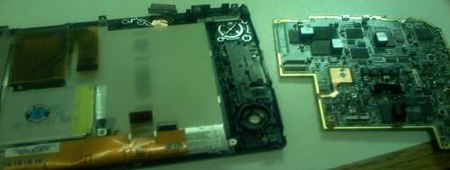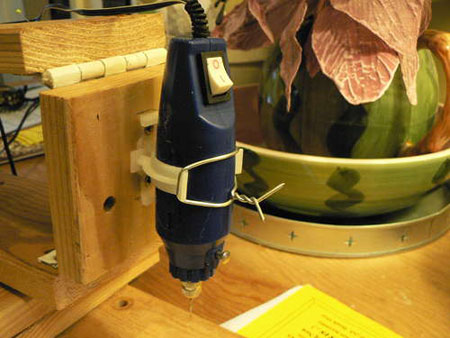
Drilling precise grids without a CNC machine can be tough to pull off. [Ookseer] has come up with a nifty method for dilling aligned holes with a drill press. He uses a right-angle jig on a Dremel drill press with stacks of business cards as spacers. The same number of cards is added between the substrate and the jig to space each new hole evenly. This method comes in handy when drilling grids in an enclosure for speakers, temperature sensors, or for an aesthetically pleasing design.













